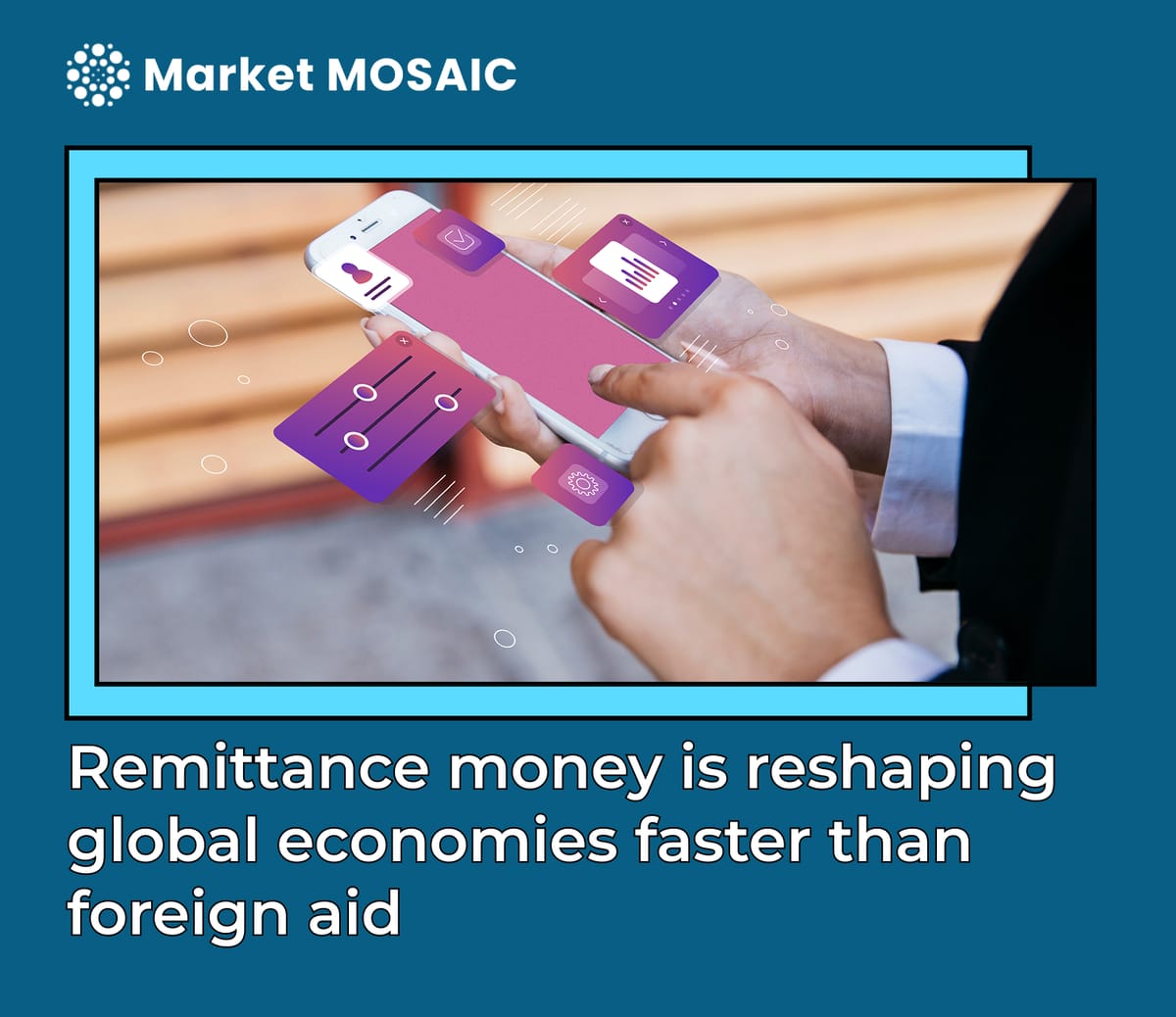Remittance money is reshaping global economies faster than foreign aid

In 2023, a quiet but profound shift redefined how capital fuels global development: migrant remittances reached $822 billion, nearly three times the value of foreign aid ($288 billion). This signals a significant recalibration of financial influence. More than a trillion dollars now moves annually from individuals working abroad to families at home. And in many cases, this money matters more than foreign direct investment or official development assistance.
The overlooked power of household capital
Remittances are often seen as personal acts of support. But collectively, they’ve become a foundational pillar of national economies. In countries like Nepal and Haiti, remittances contribute over 20% of GDP, a figure that dwarfs the scale of government-to-government aid or foreign investment inflows. In 2022, India led the world with $111 billion in remittance inflows, followed closely by countries across Asia, Africa, and Latin America.
This money doesn’t fund mega-projects or national highways. Instead, it pays for school tuition, medical treatment, daily meals, and rent needs that drive immediate consumer demand and stimulate local business ecosystems. Unlike aid, which is often slowed by bureaucracy, or FDI, which targets long-term infrastructure, remittances have an instant multiplier effect on local economies.
The digital remittance revolution
Services like Wise, PayPal, and Wave have made cross-border transfers cheaper, faster, and more transparent. In Africa, where mobile phone penetration outpaces access to traditional banking, mobile wallets like M-Pesa, MTN Mobile Money, and Airtel Money have empowered millions to send and receive money directly on their phones even in remote villages.
This transformation is more than technological, it’s structural. Lower fees, real-time transfers, and expanded reach mean that more money stays with families, and more recipients gain access to the formal financial system.
Remittance flows; now surpassing $800 billion globally, have become a critical signal of consumer resilience and economic momentum in emerging markets. Unlike foreign aid or FDI, these funds go directly to households, fueling everyday spending and long-term asset building.
Insight for business leaders
For business leaders, this presents a strategic opportunity. Retailers can use remittance trends to forecast demand. Fintech firms can gain market share by lowering the cost and friction of cross-border transfers. Real estate developers can tap into growing demand from remittance recipients seeking to invest in property or home ownership. And investors can view remittance data as a real-time barometer of grassroots economic health often more accurate than top-down metrics.
Understanding how remittances shape local economies is no longer optional it’s essential for winning in growth markets





